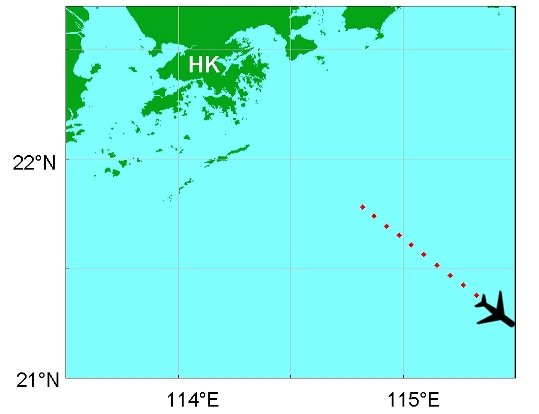Instant weather report from aircraft
A new chapter in the history of aviation weather in Hong Kong began as a Cathay Pacific B-747 departed from Hong Kong on 26 March 2003. As opposed to the usual practice of pilot reporting the weather to the air traffic controller, this time the equipment on-board the aircraft did the job for him. Altogether the aircraft made ten weather reports and transmitted them, all automatically, back to Hong Kong. The above trial is a boost to the Hong Kong AMDAR (Aircraft Meteorological DAta Relay) Programme started two years ago by the Hong Kong Observatory. Hitherto, automatic aircraft weather reports near Hong Kong have been made by Australian and U.S. airliners as part of the worldwide AMDAR activity under the World Meteorological Organization (WMO). Apart from saving the pilot's effort, the automatic nature of AMDAR reports allows more weather reports to be made. This has two advantages. The availability of AMDAR reports in near real-time facilitates monitoring of the weather, in particular windshear and turbulence in and around the airport. More importantly, they provide the much needed weather information over the data-sparse South China Sea and have been shown to improve the performance of numerical weather prediction. Both of these advantages have a positive impact on aviation safety and efficiency.

A B747 aircraft made automatic weather reports on its way to Manila on 26 March 2003